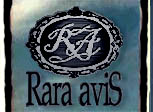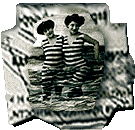

|
|
Marketing Research Done by Our Company Marketing Research for Etalon water(February of 2003) How do you increase the sales volume of non-carbonated water? Is it possible to expand its market? The research answers these questions: - How do you increase the sales volume of non-carbonated water? - Is it possible to expand its market? - What is the number of potential consumers? (What is the market capacity?) - How much has to be spent on conducting large-scale advertising events? - What is the stage of the product/market fit for "Etalon" water in the Kharkiv city at this time? - What technologies have to be applied to increase the sales volume? Common things in marketing research Questions you feel uneasy about: - Studying the marketing situation - Developing business plans - Recruiting - Developing and conducting advertising and public relations campaigns. We offer this: - Research into and analysis of the market; - Developing strategies; - Financial management; - Preparation and examination of investment projects; - Managing marketing; - Managing production; - Managing personnel; - Informational technology. We will begin with: Marketing research that will let us meet these requests of yours: 1. Overview of the market conditions: - brief diagnostics; - predicting the behavior for several years to come; - factors affecting changes in the market; 2. Current and prospective competitive analysis: - aims of competitors; - strong and weak aspects of competitors and their goods; - models of reactions from major market participants to marketing steps undertaken by competitors; 3. Analyzing the business market: - description of participants of sales; - behavior types; - factors to affect market participants; 4. Analyzing the end consumer market: - loyal consumers perceiving the goods under "their" trademark; - major competitors. 5. Strategy suggested to the consumer for application in order to increase the sales volume. 6. Suggestions and extra information supplied by the agency. The stage coming before research is inspection of marketing (marketing audit): 1. Inspection of the marketing environment (demographic, economic, scientific, technical, political and cultural factors) 2. Inspection of the microenviornment (markets, customers, competitors, suppliers) 3. Inspection of the marketing strategy (a program of the company's operations, efficiency of management) 4. Inspection of the effectiveness of marketing (marketing control, profitability analysis, goods, prices, advertising, sale promotion, popularization) A plan of this sort allows to conduct research into planning the company's operations and to discover market opportunities in the areas where the company may have clear competitive advantages. The cost mechanism of this kind of research is to be discussed separately with a specific task at hand. An order for marketing research may be completed in full according to the International Code on Marketing and Social Research, based on the systematic approach, complex analysis, comprehensively employing scientific principles and strategic planning methods, while taking into account external and internal factors (economic, scientific, technical, ecological, legal ones, etc.). 5. Technical aspects: To do the work, the company will engage highly qualified specialists, including those from national academic and international research entities. The company may do some of the work in cooperation with North-East Science Center of the National Academy of Sciences of Ukraine. The validity of results and recommendations presented are assured through: - the official status and professional activities of North-East Science Center of the National Academy of Sciences of Ukraine, including the development of various international projects, national and regional programs, including socioeconomic, ecological, demographic, innovation ones, etc.; - professional sources of information from official, governmental, statistical, occupational, and scientific management entities and activities, as well as entrepreneurial, social, international ones, etc.; - a sufficient body of research work done (including that across all the regions of Ukraine, CIS and other countries), where it would be sensible and perhaps necessary to have Customer and Contractor interact, with Contractor consistently supporting the program developed. Doing marketing research. Possible methods of collecting information are: - expert surveys; - analyzing secondary information; - analyzing the market in terms of selling the product; - analyzing expenses and behavior of consumers; - calculating market capacity based on consumption rates. Let us take them up in order. Discussions in focus groups lead to hypotheses that can later be tested, furnish information that may prove useful when creating a questionnaire, provide more basic data on categories of goods, and share impressions of concepts of new goods or services. Often, to get a representation of a wide range of viewpoints, several focus groups are made up. In this case, making up two groups will be helpful: 1. A group embracing consumers with average and above-average incomes. 2. A group embracing consumers with high incomes and VIP customers. Expert surveys are interviewing people who are well-grounded in the area of research, each one of them having something to do with the marketing conditions. It can be top management of a company, sales managers, managers in charge of certain goods, sales representatives, wholesale and retail salesmen who are themselves customers of supermarkets, marketing specialists, etc. The purpose of the research is to arrive at productive ideas and opinions that would be of use, not to obtain statistics on the subject. Thus, to be chosen are respondents who are capable of furnishing the information needed. Every interview is conducted in the respondent's workplace and lasts for 1.5 to 3 hours. Experts are asked to evaluate the past, present and possible future of the product/market fit, as well as comparative advantages and disadvantages of major competitors, including the company concerned. Analyzing secondary information. Includes analyzing any sources that may contain data on the target market and that may be of help in marketing activities: statistical data, data from governing bodies, market reviews, trade journals and articles, data available online, etc. However, information collected in this way most commonly proves to be incomplete, rather complex to be used in practical application, and often of questionable validity. Analyzing the market in terms of selling the product. Includes research into wholesale and retail businesses. Information obtained from this source allows to establish actual sales volume and the degree of representation of producers and trademarks. Since there are fewer sellers than buyers, this research is often quicker and cheaper to conduct than research into consumers. The problem is how precise the information furnished by the sellers will be and how representative the sample will be of the general population (of all points of sale in the market selling the product). Analyzing expenses and behavior of consumers. Research is done into expenses by consumers in the target store for a certain period of time, or into frequency of purchases and volume of the products bought, together with average retail prices, or into standard consumption rates for a category of goods. This research also helps bring up a wide range of materials concerning behavior and motivation of consumers: their attitude to a certain trademark, the volume of a single purchase, frequency of buying goods, expected prices for goods, brand distinguishability index, loyalty to a brand, motivation in choosing goods of a certain brand, etc. The issue of precision with this sort of information is how correctly and truthfully buyers will render the data regarding their consumption. Calculating market capacity based on consumption rates. As a rule, this approach is used for food commodities, raw materials and expendables. The statistical basis for calculations is yearly per capita consumption rates and the total population size. Thus, the resulting market capacity figure is arrived at through multiplying the per capita consumption rate by the total population size. |
|
||||||||||||||||||||||
|
||||||||||||||||||||||||
